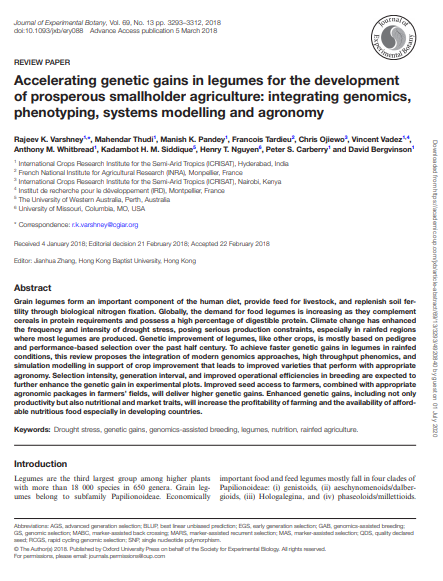Accelerating genetic gains in legumes for the development of prosperous smallholder agriculture: integrating genomics, phenotyping, systems modelling and agronomy
Summary
Grain legumes form an important component of the human diet, provide feed for livestock, and replenish soil fertility through biological nitrogen fixation. Globally, the demand for food legumes is increasing as they complement cereals in protein requirements and possess a high percentage of digestible protein. Climate change has enhanced the frequency and intensity of drought stress, posing serious production constraints, especially in rainfed regions where most legumes are produced. Genetic improvement of legumes, like other crops, is mostly based on pedigree and performance-based selection over the past half century. To achieve faster genetic gains in legumes in rainfed conditions, this review proposes the integration of modern genomics approaches, high-throughput phenomics, and simulation modelling in support of crop improvement that leads to improved varieties that perform with appropriate agronomy. Selection intensity, generation interval, and improved operational efficiencies in breeding are expected to further enhance the genetic gain in experimental plots. Improved seed access to farmers, combined with appropriate agronomic packages in farmers’ fields, will deliver higher genetic gains. Enhanced genetic gains, including not only productivity but also nutritional and market traits, will increase the profitability of farming and the availability of affordable nutritious food, especially in developing countries.
Open resource Download resource Access resource on external site

